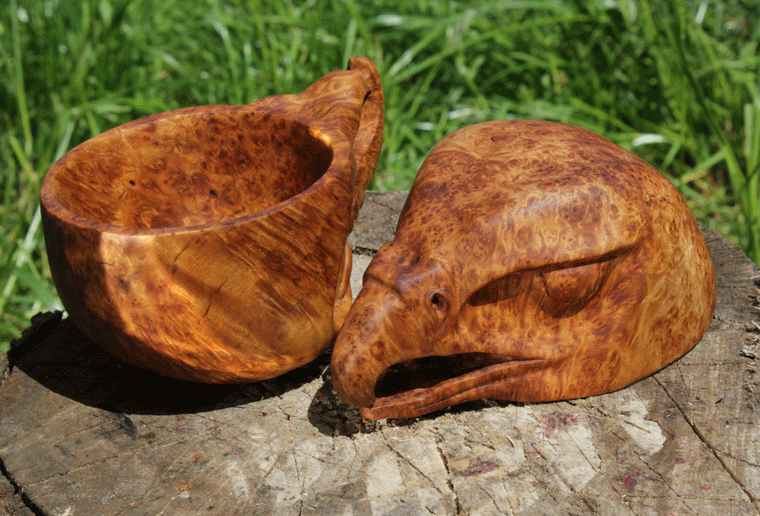Looking forward, innovation and new design are human traits applied to everything around us. We improve everything from grass to new forms of energy. They are certainly not the monopoly of the art world. I understand the why of the Scandinavian influence, I was asking why slavishly follow it.
Funny you mention the V&A, back in the 80's and 90's I had a minor dispute with them. I refused to sell them some of my photographs. They saw them as art and I didn't. They needed to be put in context within a magazine or newspaper.. They were not for voyeuristic use by the well off art world.( The only thing worse would have been if a member of my staff sold a picture to Saatchi & Saatchi to sell Heiniken. She was finally sacked)
Now here am I suggesting we could add a bit more personal art to our everyday items . To draw maybe from nature around us and personalise our kit just as our fore fathers did. Next time you are in London or Lancaster, try the Maritime museums.See how our ancestors took ideas from around the world and made them there own.
As to end grain cups,I have never tried to find their origin. I am at least a forth generation woodworker, with it extending back through both grandfathers. So if their father's fathers carved them its likely that it extended further back and certainly to us, its traditional. If museums dont have any I am not surprised . Most early Welsh woodwork emigrated to America in the 80's. You try and find a Welsh dresser in Wales now, everything disappeared. My traditional craft skills come from Wales as a boy but also from the Cotswold's and Somerset. If I wanted to track the origin down , I would try these places first.
In Wales woodenware has always been produced locally , it certainly did not cease 300 years ago. My main influence is Welsh spoon making.I rarely use tradition symbols but items from the lives of the folk who commission them. We call them story spoons and normally they are highly personal, again not for the public eye, but a record of the past for that family. I say take from the past, use old techniques, new if need be. but go forward. Look at the world around you and get inspiration from it. One day I might be carving dragons, eagles, otters or brambles, the next trains , ca or a violin.
We are so far off track here, what I will do is post some pictures in an article showing how we could be taking from the past but be looking forward. I will compare some items carved when green and show why I often opt for seasoned timber. Not kiln dried , but processed by me and explain the joys of using it and the benefit of making your own tools.
I will concentrate on the decorative carving of cups and spoons, maybe break some rules. I could maybe take the design aspect of craft into metal as well. Don't hold your breath as I am off to Scotland on a Burr hunt.My current interest in cups, kuksas and noggins was sparked by trying to get the most out of small burrs. This led to an approach by a forest school to think of something to carve other than woodspirits. I was surprised as nature is overflowing with suggestions, but I have come up with some simple forms and am now just looking at how I would get kids to carve safely,( having been approached by Scout leaders unsure of how to pass on knife skills.)
Its a shame we have diverted from drying wood, it can be so simple and change a piece dramatically. Drying can mean leaving a log for a year, that log can still be seen as green timber, its certainly not kiln dried. A lot of our tools require handles, it's fantastic to use a piece of wood that is personal to you, that you have harvested , dried then shaped. I still use my fathers and grandfathers tools, and almost every time remember their hands on them. I also have tools that I have made. The handles are from an Oak , that I grew from an acorn from a special place .It was planted to celebrate me delivering my daughter into this world.
My team and my self are hoping to get to the Bodger's Ball. Maybe we can continue this over a cider then Robin. For now I better work out how to post a picture. If I can here are a couple of cups, kuksas or noggins. Being an " arty " (spit! ) type they are copyrighted I have no problems with individuals copying , but will draw the line at pro's mass producing for sale. Funny old world this internet bushcraft!
Cheers John

